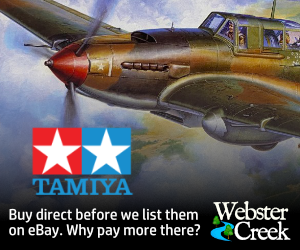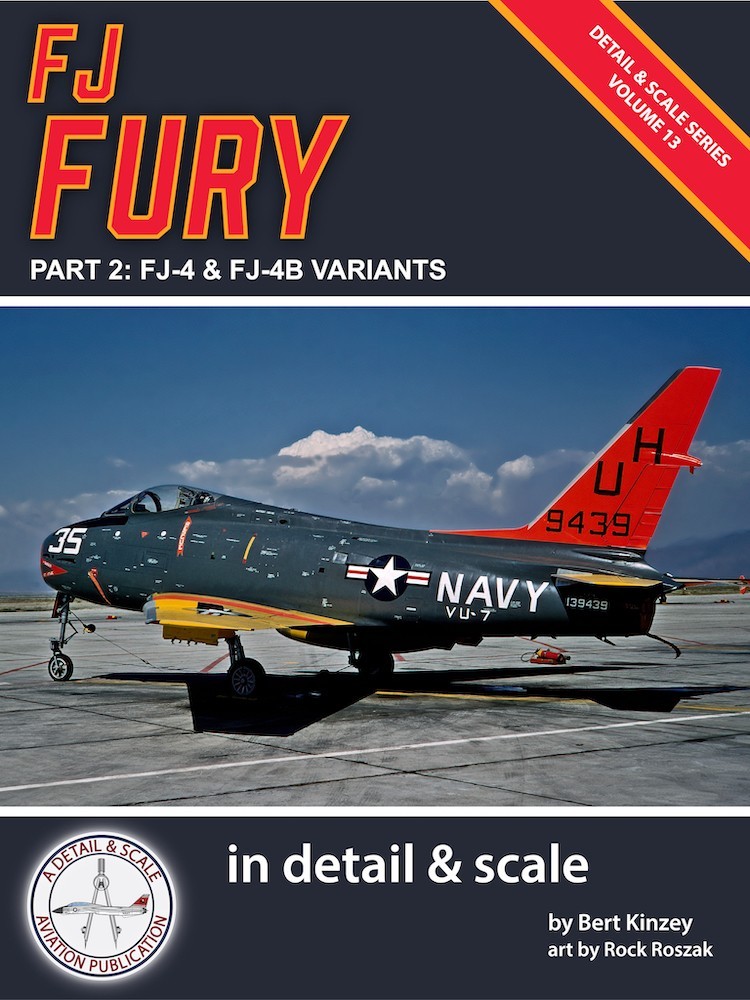
Introduction
Detail & Scale first published a Fury book in 2003 but there is a lot to Fury history, so to cover it properly, D&S has divided the subject into two volumes. Modern digital publishing affords the ability to economically add more color photos and this book - and you - reaps that benefit. FJ Fury, Part 2: FJ-4 and FJ-4B Variants covers the ultimate Fury. Please visit the product page here: D & S Fury Pt 2.
FJ Fury, Part 2: FJ-4 and FJ-4B Variants presents the further development of the fighter in 102 pages, with 209 photos (145 in color), with 11 full color profiles and several additional illustrations. That is the print version, catalogued as ISBN 9798769641244. The electronic Kindle and Apple formats feature 147 pages, 207 photos (144 in color), 11 color profiles.
FJ Fury in Detail & Scale, Part 1: Prototypes Through FJ-3 Variants was released in mid-2021.
Detail and Scale books are excellent sources for modeling and history; I have been reading them since the late 1980s and they still impress me. Yet only recently have I comprehended just how comprehensive they are. Founders and authors Bert Kinzey and Rock Roszak bring over 60 years of first-hand military aviation expertise into their Detail and Scale brand. Roszak, a USAF navigator who retired as a colonel, creates illustrations for the books. Both of the Detail and Scale creators are modelers, too.
Content
To keep their fighters competitive in the postwar atomic sky, United States Navy (USN) swept the wings of their two brightest fighters, the F9F Panther (review available here Detail & Scale F9F review ), and the FJ Fury. With the FJ-4 the Fury could carry nuclear weapons and shoot air-to-air missiles. Stars were born and this book recounts how well it worked out.
FJ Fury, Part 2 features 102 pages of content presented through five chapters and nearly a dozen sub-chapters and sections:
- Introduction
Developmental History
Fury Variants
- FJ-4
FJ-4B
FJ-4F
- Cockpit Details
Windscreen & Canopy Details
Fuselage Details
Wing Details
Pylon & External Stores Details
Landing Gear Details
Tail Details
Engine Details
Those sections are richly supported with photographs and graphics.
Cracking open the book you’ll find Introduction explains the book in relation to other D&S books, from its first publication in 2003 to how the material has burgeoned to the point that it was deemed too big even for the digital format, and divided into two books. Contributors are acknowledged as well as which aircraft were visited for photographed. It also notes the extensive modifications and redesigns for the Fury, its history, and the general overview of this content. If you wonder if the design was based on captured German data, please read D&S FJ Fury, Part 1. Developmental History presents the gestation of the Fury, including concise looks at the FJ through FJ-3, then into the FJ-4series. Those various versions and variants can be tricky to keep track of but thankfully, D&S includes gems such as North American Aviation (NAA) project design numbers, e.g., NA-134 for the XFJ-1, NA-248 for the FJ-4F. It explains subtle and obvious differences through the family development, including re-engining of the jet, new airfoils, enhanced war capabilities, fuel capacities, as well as other changes and refinements like speed brakes, flight performance, numbers built, and the FJ family in relation to further naval jet development. Bureau numbers are included where pertinent. It even reveals restored flying examples. Like in Part 1, a good deal of information in 12 pages.
Fury Variants requires 33 pages to cover the evolution of the Fury into the FJ-4 through FJ-4F. Official NAA documentation is used to dispel myths and false legends of the FJ-4F. Full of photos, the chapters also include original color artwork, tables, and graphics showing the general arrangement, external stores capabilities, and more. The FJ needed more gas but without sacrificing performance. The FJ-4 resulted from an airframe redesign, as were some drop tanks. Combat ranges and radii with different configurations are noted. This Fury was also a limited fighter-bomber and its capabilities and weapon certifications are discussed. Avionics are included as well as weapon system components (gun sights, radars, fire control systems). Where a variant was deployed is also mentioned. The FJ-4B receives the same attention to detail, including the unusual position of the electronics to guide Bullpup missiles, its ability to drop nuclear weapons, and its role as a flying gas station. The FJ-4B’sversatility made it the F-4 Phantom II of its day, although in different ways. Fearing Soviet bombers, USN and NAA created and tested the rocket-boosted radar-equipped FJ-4F. That rocket is explored with its design and technical specifications. The authors include fascinating factoids such as the rate-of-climb performance findings, including G-loadings and speeds.
Fury Details are pages of photographic explorations of the jets, supported with more original artwork. These galleries contain color photos, the majority being specially exposed for this book.
Cockpit Details – four pages of eight photos and three illustrations.
Windscreen & Canopy Details– three pages, 10 photos.
Fuselage Details – 23 photos on six pages (vortices generators, tail skid and hook, dive brakes).
Wing Details – four pages, 15 photos (uncommon anti-skid colors, spoilers unique to the -4B and slight control surface angles).
Pylons & External Stores Details – nine pages, 21 photos, two illustrations (ever wonder what the attachment surface of an ordnance pylon really looks like?).
Landing Gear Details – 17 photos on six pages, very clear views of wheel wells and landing gear.
Tail Details – three pages and 14 photos, including three designs of the vertical stabilizer: original; early evaluation; production.
Engine Details – two pages, five photos: three of a Wright J65-W-16A cutaway; view into the inlet and tailpipe.
Those images should cover about any question a modeler may have about these Fury variants. For those who debate the authenticity of a spiderweb of scribed panel lines on a model, these images show just what can reasonably be seen.
Modelers Section is the final part of the book and for many readers, is the pearl in this Fury treasure trove. In it we are treated to a fairly comprehensive reviews of FJ-4s and FJ-4Bs kits ranging from 1/144 scale to 1/32 scale – 15 pages of information. Each commentary and review begin with a commentary of the particular Fury model. Who noticed the vortex generators are missing from the Matchbox model, and the lack of spoilers on most FJ-4B kits? Want to know which kit is a re-pop from Emhar? Are the scribed panel lines uniform across a particular kit? Author Bert Kinzey built many of the models and includes models built by other contributors, including some “in-progress” images revealing flaws. All known Fury models, as of 2021, from manufacturers in each scale are covered, including accuracy, molding/casting quality, fit (if built), details, and personal assembly recommendations. We are treated to reviews of built models including a 3D printed kit (with valuable information about handling such a model), and a rarity for D&S – a vacuform model. The cast of characters include a single model in 1/144 and 1/32, three in 1/72 and four in 1/48. A photo of the model accompanies each review. Aftermarket detail and add-on sets are suggested where appropriate.
Visual Support
Photographs
Modelers and enthusiasts of early to modern jets, this series is a cornucopia of resource material and inspirations. Extensive color photo galleries enhance the text, as do the black-and-white images. As we have seen, most of the photos in the detail section are full color. Their quality is what I describe as studio quality – precisely focused, expertly composed and framed, and effectively lighted. The publishers use a remarkable collection of B/W or color images from the Fury era. A significant number are described in the preceding chapter Fury Details.
Artwork
What the camera missed is recreated with artwork by Rock Roszak.
1. FJ-4 Fury, original North American drawings including standard markings: profile; top and bottom planforms; head-on; keyed with over 30 major features.
2. FJ-4B External Differences: views from front; profile; planform; line drawings with colored emphasis text and components.
3. FJ-4, Naval Air Test Center, NAS Patuxent River, right profile.
4. FJ-4, VMF-232 “Red Devils,” USS Bennington, Quemoy Crisis, right profile.
5. FJ-4, VMF-235 “Death Angels,” left profile.
6. FJ-4, VMF-334 “Falcons,” NAF Atsugi, Japan, left profile.
7. FJ-4, VMF-451 “Warlords,” left profile.
8. FJ-4, VU-7, tri-color utility scheme, right profile.
9. Cutaway 3-view FJ-4B General Arrangement: adapted from the flight manual and keyed to 27 components.
10. FJ-4B External Stores Capabilities, frontal view identifying armament stations accompanied by a table illustrating ordnance carried on stations 1-6:
a. 5-inch HVAR
b. Aero 6A Pod, seven 2.75-in rockets
c. Aero 7D Pod, nineteen 2.75-in rockets
d. Aero 9D Pod, nineteen 2-in rockets
e. Aero 10 Pod, four 5-in HVAR
f. Sidewinder
g. AGM-12 B Bullpup A & guidance pod
h. 260-lb fragmentation bomb
i. 500-lb bomb
j. 1000-lb bomb
k. 2000-lb bomb
l. 150-gallondrop tank (outboard)
m. 200-gallon drop tank (inboard)
n. Buddy tanker
o. Mk 7, Mk 12, Mk 28, Mk 43 & Mk105 and Aero 14 spray tank
11. FJ-4B, VF-63 “Fighting Redcocks,” right profile.
12. FJ-4B, VF-126, left profile.
13. FJ-4B, VMA-223 “Bulldogs,” left profile.
14. FJ-4B, Naval Reserve NAS Glenview, Illinois, right profile.
15. FJ-4B, BuNo. 143538, Naval Reserve NAS New Orleans, right profile.
16. FJ-4B Dimensions, original U.S. Navy drawings: profile; planform; head-on; keyed with over 50 measurements and components including sweep, airframe stations, holdback fittings, etc.
17. Mark 8 Mod 8 Gun Sight with AN-N6A Gun Camera: 3-view with explanatory caption.
18. Martin-Baker Mark N5 Ejection Seat: based on flight manual illustrations, artist Rock Roszak created two 3-views of the seat keyed to 25 components.
19. FJ-4 Inflight Refueling Tanks by Tommy Thomason, keyed to two dozen components:
· Right hand with hose reel and drogue, 224-gallon
· Left hand, 344-gal.
Tables
1. FJ-4 Weights: seven conditions and values.
2. FJ-4B Weights: seven conditions and values.
3. FJ-4 Electronics designations and use.
4. Primary units operating the FJ-4 13 units including Marine Headquarters & Maintenance Squadrons (H&MS), Marine aircraft repair squadrons, miscellaneous units and facilities by:
· Squadron number
· Nickname
· Home base
· Tailcode
· Remarks
5. Primary units operating the FJ-4B: 25 units by:
· Squadron number
· Nickname
· Home base
· Tailcode
· Remarks
Detail & Scale Series publications are valued part of my bookshelf because of that synergy of text and graphics.
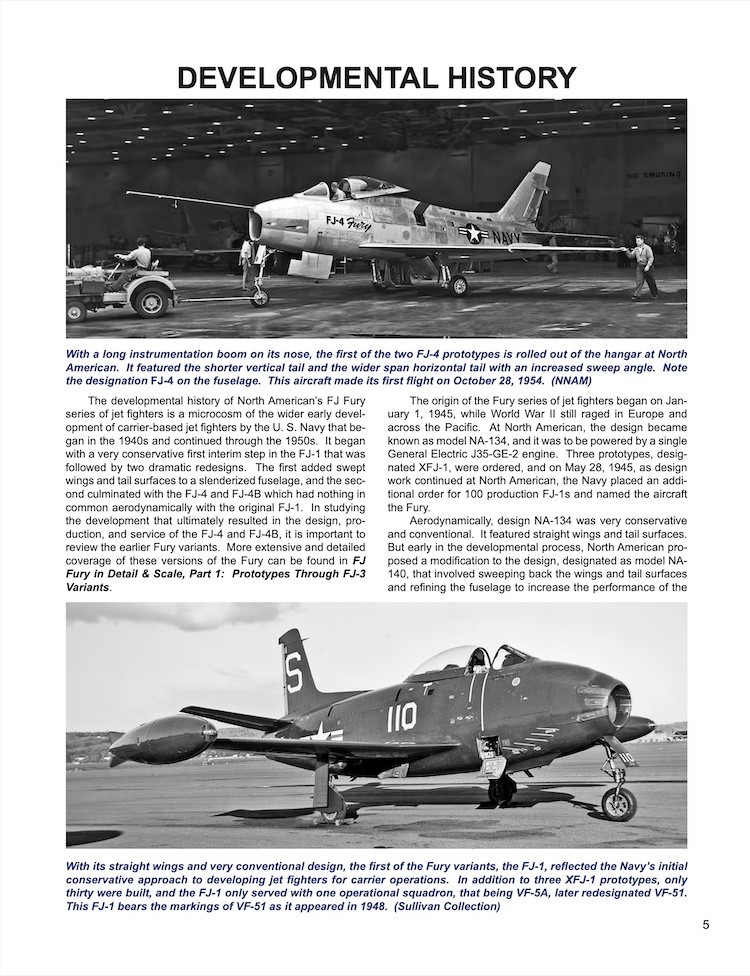

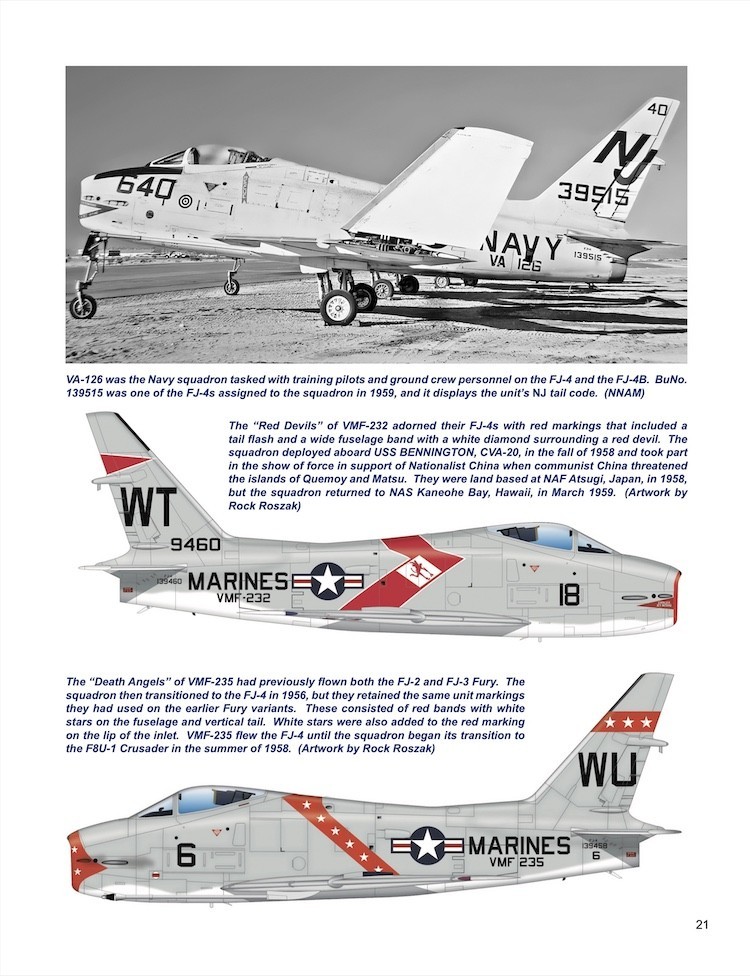
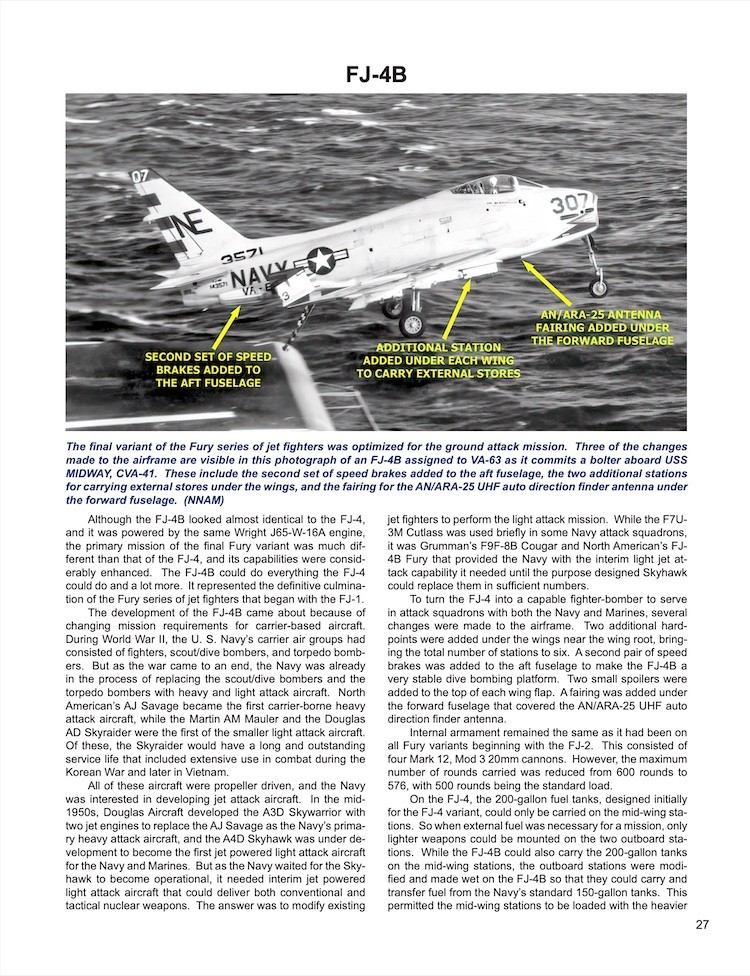
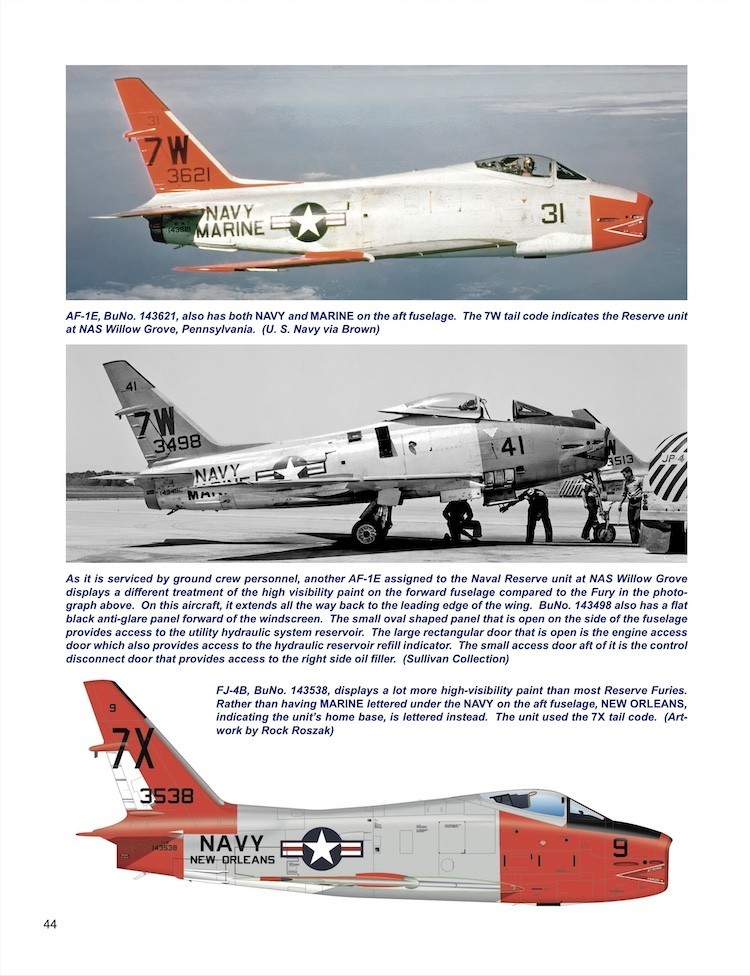

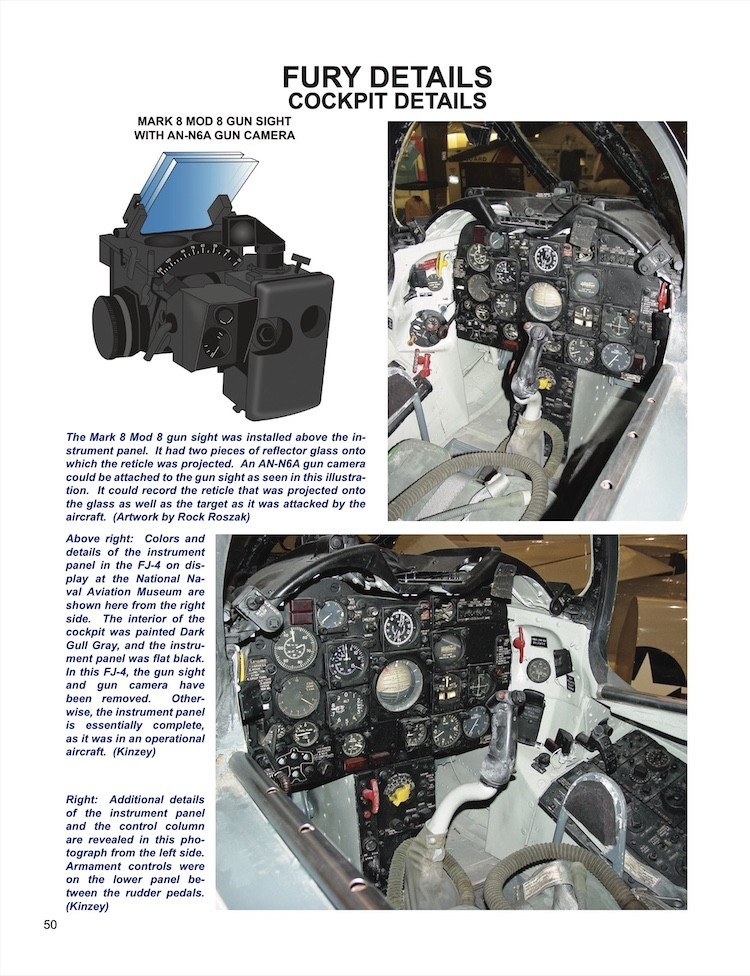
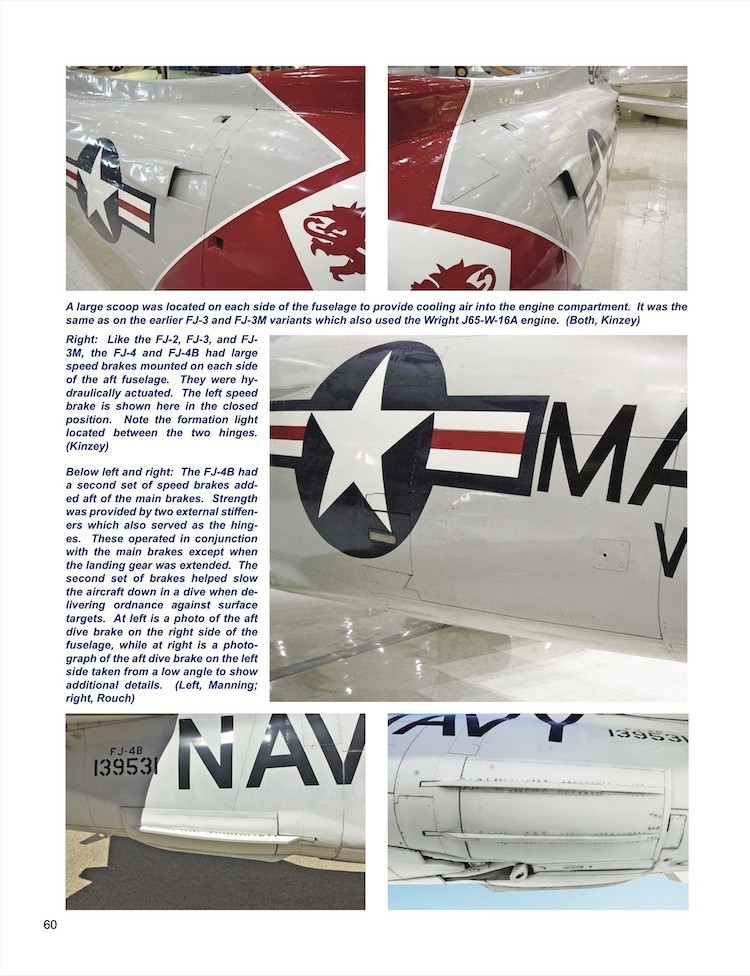
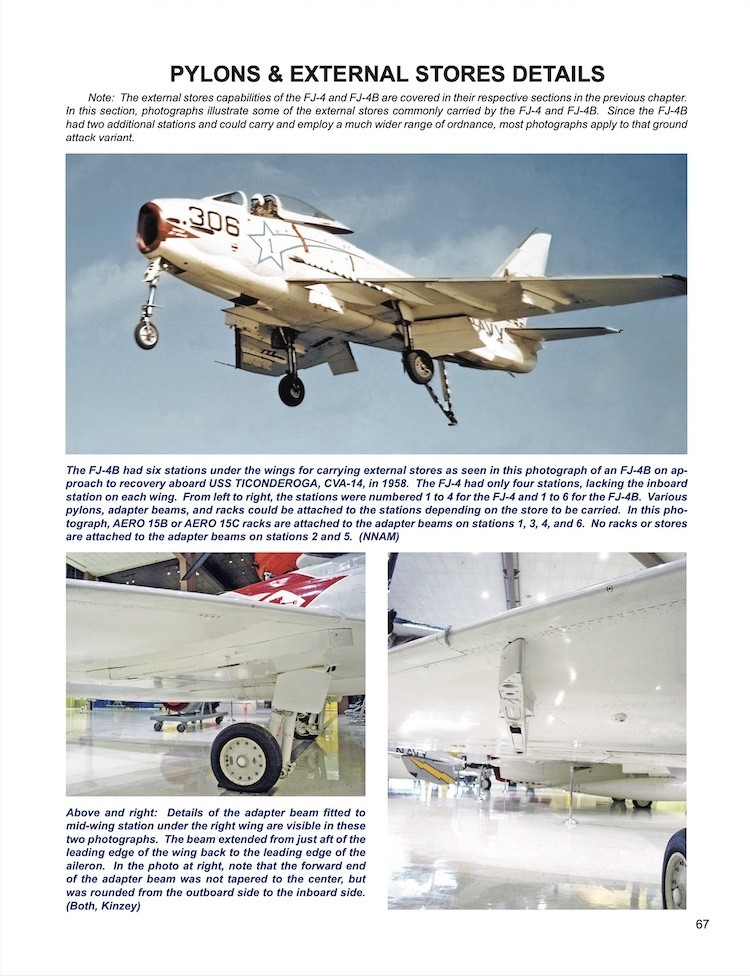
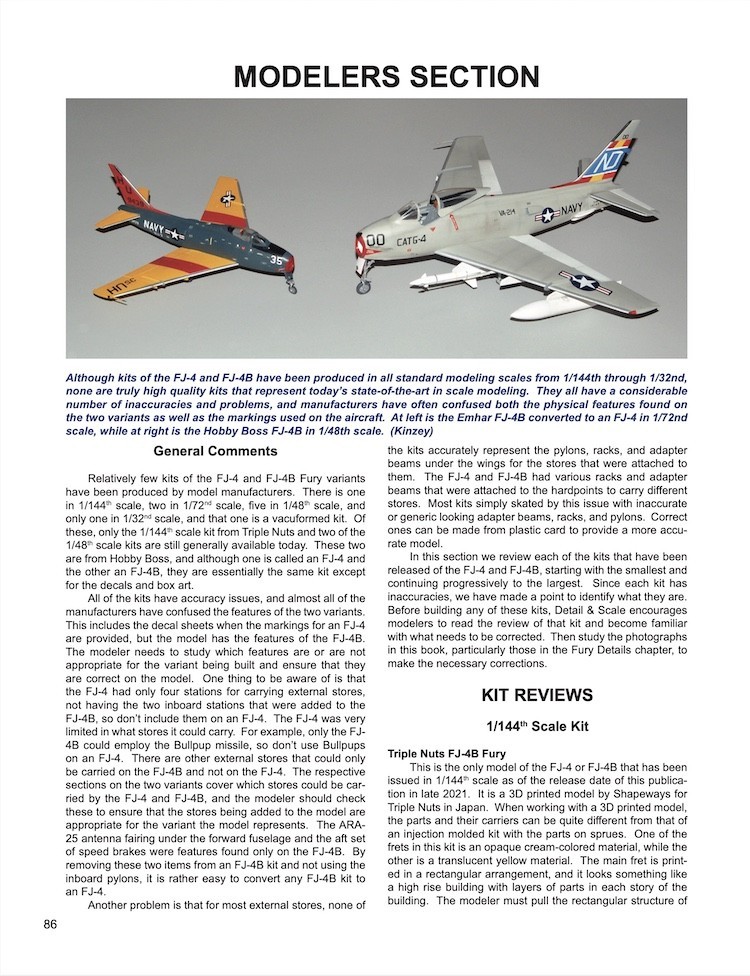
Conclusion
At the risk of sounding like a stuck record (for those of you old enough to get that reference), USN’s Fury is a classic fighter of a classic era and FJ Fury in Detail & Scale, Part 2: FJ-4 and FJ-4B Variants should become a classic reference of the jet. Detail & Scale authors and artists are historians and modelers, creating products with erudite content for both communities. With an exceptional gallery of photos and original artwork supporting thoroughly researched and expertly presented text, the content creates a book worthy of any bookcase. FJ Fury in Detail & Scale, Part 1 is an equally desirable companion to this book. Both should be valued for modelers and enthusiasts of early jets, naval or land based.
Expert content richly supported with graphics, what more could one want? I am impressed with this volume and recommend it to aviation enthusiasts.
Please remember to mention to Detail & Scale and retailers that you saw this product here - on Aeroscale.











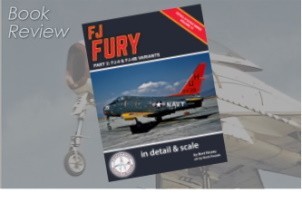











![Junkers F13 [Early Prod] With Winter Skis Coming Soon](/upload/media/posts/2025-07/22/48020-junkers-f13-with-winter-ski-early-prod_1753181324-s.jpg)
